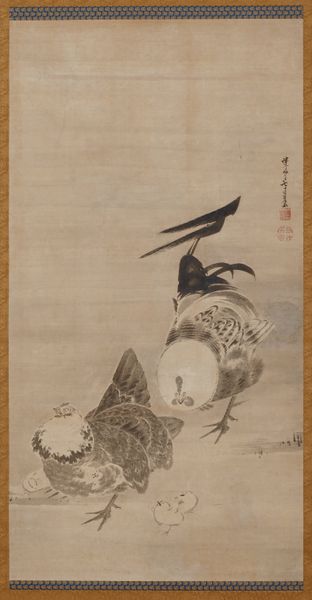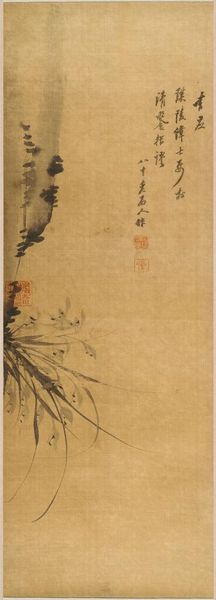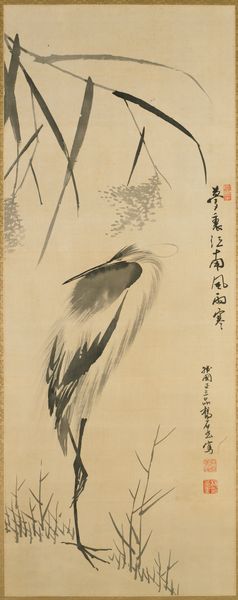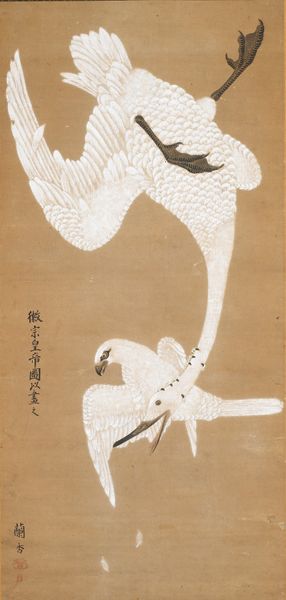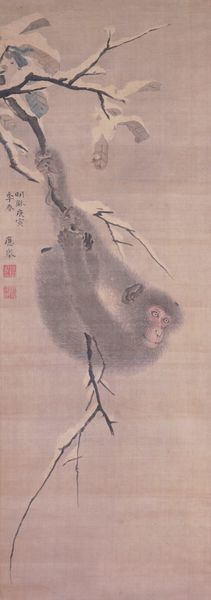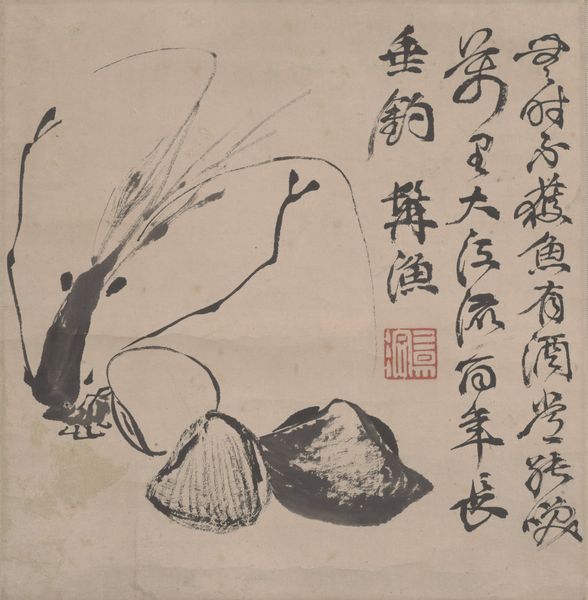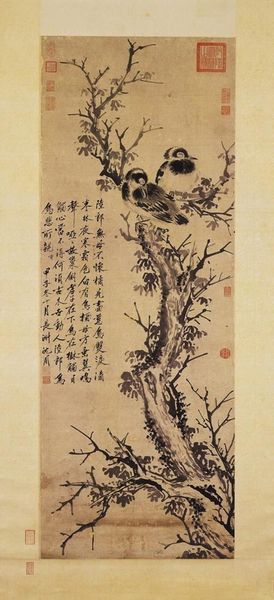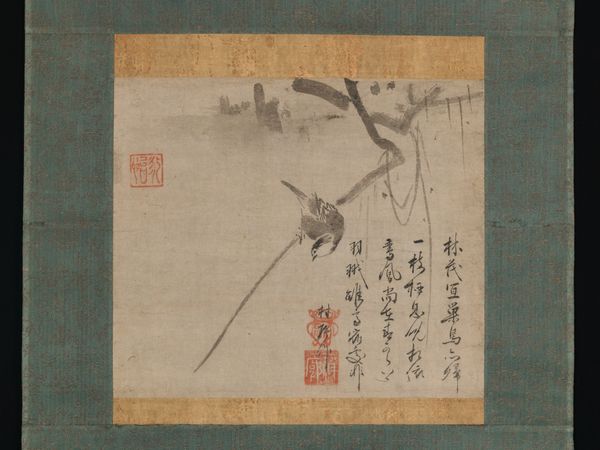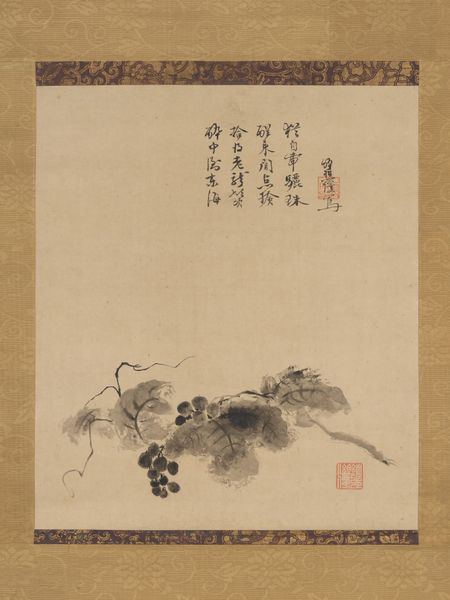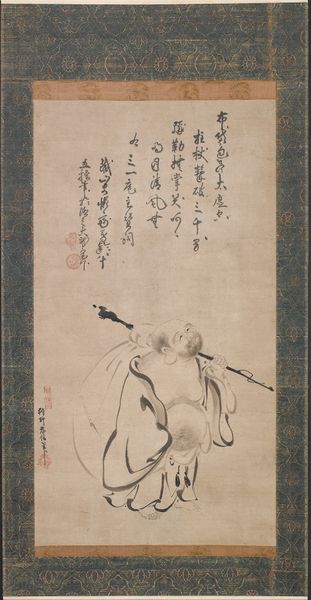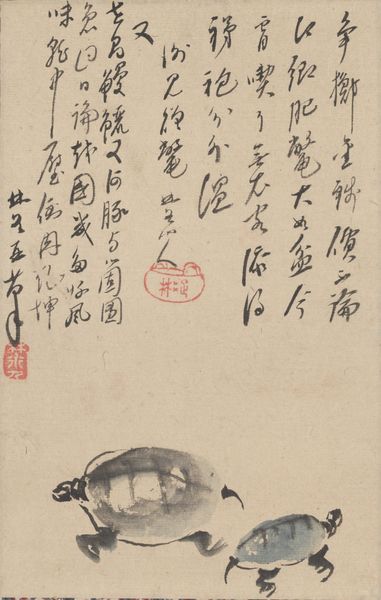
drawing, paper, ink-on-paper, ink
#
drawing
#
asian-art
#
paper
#
form
#
ink-on-paper
#
ink
#
geometric
#
line
Dimensions: 22 11/16 x 11 9/16 in. (57.63 x 29.37 cm) (image)61 1/2 x 17 3/4 in. (156.21 x 45.09 cm) (overall, without roller)
Copyright: Public Domain
Curator: Here we have Zhen Yi’s “Bamboo Shoot and Mushrooms,” an ink-on-paper drawing from 1626. The interplay of delicate lines and forms… what strikes you first? Editor: Sparseness. A minimalist whisper. Those embryonic bamboo shoots, huddled like secrets, juxtaposed against what seems like an endless expanse of… nothing. It's more void than backdrop, you know? Makes you hold your breath a little. Curator: The void is significant. It speaks to the Daoist principle of emptiness, of making space for potential and contemplation. The bamboo itself symbolizes resilience and flexibility in the face of adversity. The mushrooms, longevity. Editor: I get it. Like little vegetal talismans arranged for good fortune? But doesn't the severe composition hint at something else too, like the fragility of existence itself? This isn’t some boisterous banquet, is it? It’s a solitary meal. Curator: Precisely. In Chinese art, negative space isn't merely absence, but active presence. The single stalk, with just a few humble mushrooms, becomes all the more poignant. This echoes the scholar-artist's life, which prizes humble virtue above extravagance. Editor: I love that contrast between resilience and fragility that’s baked into this artwork. Makes me think of emotional memory stored across generations in something so minimal, using simple means—a symbol in its very style. I’m drawn to how that one image becomes a point of convergence where collective memory meets private reflection, right? Curator: Yes. Through symbolic shorthand, artists could create works rich in cultural memory and resonance for a cultivated audience that was alert to the cultural and psychological depth and insight. Editor: This quiet intensity has settled something in me, and isn’t that what good art does? Curator: Indeed. And with Zhen Yi’s piece, perhaps it is a feeling that will persist long after we've left it here today at the Minneapolis Institute of Art.
Comments
minneapolisinstituteofart almost 2 years ago
⋮
Zhen Yi, whose given name was "Useless" (Wu Yong), came from Yangzhou. At first he studied the classics and Confucianism, but became a noted Hangzhou Buddhist monk. Steeped in Chan philosophy, he wrote both poetry and prose and was a skilled painter. Over sixty of his writings were published. This rare painting bears a short inscription by him: This is dragon's grandson emerging from the bamboo's womb. Master Dongpo named it "Chan master jade plank" and from this, one can imagine its flavor. Signed Monk Zhen Yi, 1626 This enigmatic painting and poem extolls vegetarianism. The reference is to a story by the Song dynasty monk Huihong (1071-1128) who relates that when the great Song poet, Su Dongpo (1036-1101) and his friend, Liu Qizhi, visited the Chan monk "Jade Plank" (Yu-pan), the priest served a special type of bamboo shoot that the two guests found exceptionally delicious. When Liu asked its name, Su Dongpo responded, "It should be called "Jade Plank" for this elder master, expert at expounding the Dharma, leads people to appreciate the flavor of the joy of Chan.
Join the conversation
Join millions of artists and users on Artera today and experience the ultimate creative platform.
